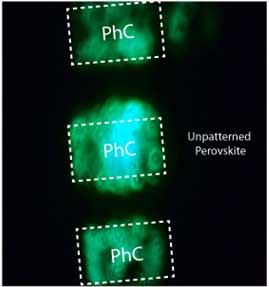 Researchers have found that certain organic semiconducting materials can transport spin faster than they conduct charge, a phenomenon which could eventually power faster, more energy-efficient computers.
Researchers have found that certain organic semiconducting materials can transport spin faster than they conduct charge, a phenomenon which could eventually power faster, more energy-efficient computers.
Tuesday, March 26, 2019
A new spin on organic semiconductors
 Researchers have found that certain organic semiconducting materials can transport spin faster than they conduct charge, a phenomenon which could eventually power faster, more energy-efficient computers.
Researchers have found that certain organic semiconducting materials can transport spin faster than they conduct charge, a phenomenon which could eventually power faster, more energy-efficient computers.
Bacteria could become a future source of electricity
 In recent years, researchers have tried to capture the electrical current that bacteria generate through their own metabolism. So far, however, the transfer of the current from the bacteria to a receiving electrode has not been efficient at all. Now, they have achieved a slightly more efficient transfer of electrical current.
In recent years, researchers have tried to capture the electrical current that bacteria generate through their own metabolism. So far, however, the transfer of the current from the bacteria to a receiving electrode has not been efficient at all. Now, they have achieved a slightly more efficient transfer of electrical current.
Layered liquids arrange nanoparticles into useful configurations
 Theoretical approach for assembling nanoparticles uses an idea similar to separated vinaigrettes.
Theoretical approach for assembling nanoparticles uses an idea similar to separated vinaigrettes.
Brightening perovskite LEDs with photonic crystals
 Researchers demonstrated high light extraction efficiency of perovskite photonic crystals fabricated by delicate electron-beam lithography.
Researchers demonstrated high light extraction efficiency of perovskite photonic crystals fabricated by delicate electron-beam lithography.
Electronics at the nanoscale: challenges and opportunities for making metal nanowires
 Molecular nanowires can be used for many applications, from LED lights to medical devices.
Molecular nanowires can be used for many applications, from LED lights to medical devices.
Metal nanoclusters can be used as semiconductors: key properties observed for first time
 Tiny nanoclusters of metal atoms - such as gold and silver - have properties, which mean they can be used as semiconductors. The finding opens the door to a wide range of potential new applications, from phone displays and flatter screens to wearable technology.
Tiny nanoclusters of metal atoms - such as gold and silver - have properties, which mean they can be used as semiconductors. The finding opens the door to a wide range of potential new applications, from phone displays and flatter screens to wearable technology.
Will cyborg circuits be made of melanin?
 Scientists have achieved a billion-fold increase in the electrical conductivity of melanin, that could unleash its potential in safe, sustainable bioelectronics.
Scientists have achieved a billion-fold increase in the electrical conductivity of melanin, that could unleash its potential in safe, sustainable bioelectronics.
Do nanomaterials affect pollinating insects?
 There is concern that pollinating insects are at risk due to nanomaterial exposure. Pollinating insects like bees or bumblebees are potentially exposed to nanomaterials via aerosols, the pollen of contaminated plants and water droplets. Managed pollinators may be additionally exposed in the hives due to direct application of nanomaterials by beekeepers.
There is concern that pollinating insects are at risk due to nanomaterial exposure. Pollinating insects like bees or bumblebees are potentially exposed to nanomaterials via aerosols, the pollen of contaminated plants and water droplets. Managed pollinators may be additionally exposed in the hives due to direct application of nanomaterials by beekeepers.
Subscribe to:
Comments (Atom)
